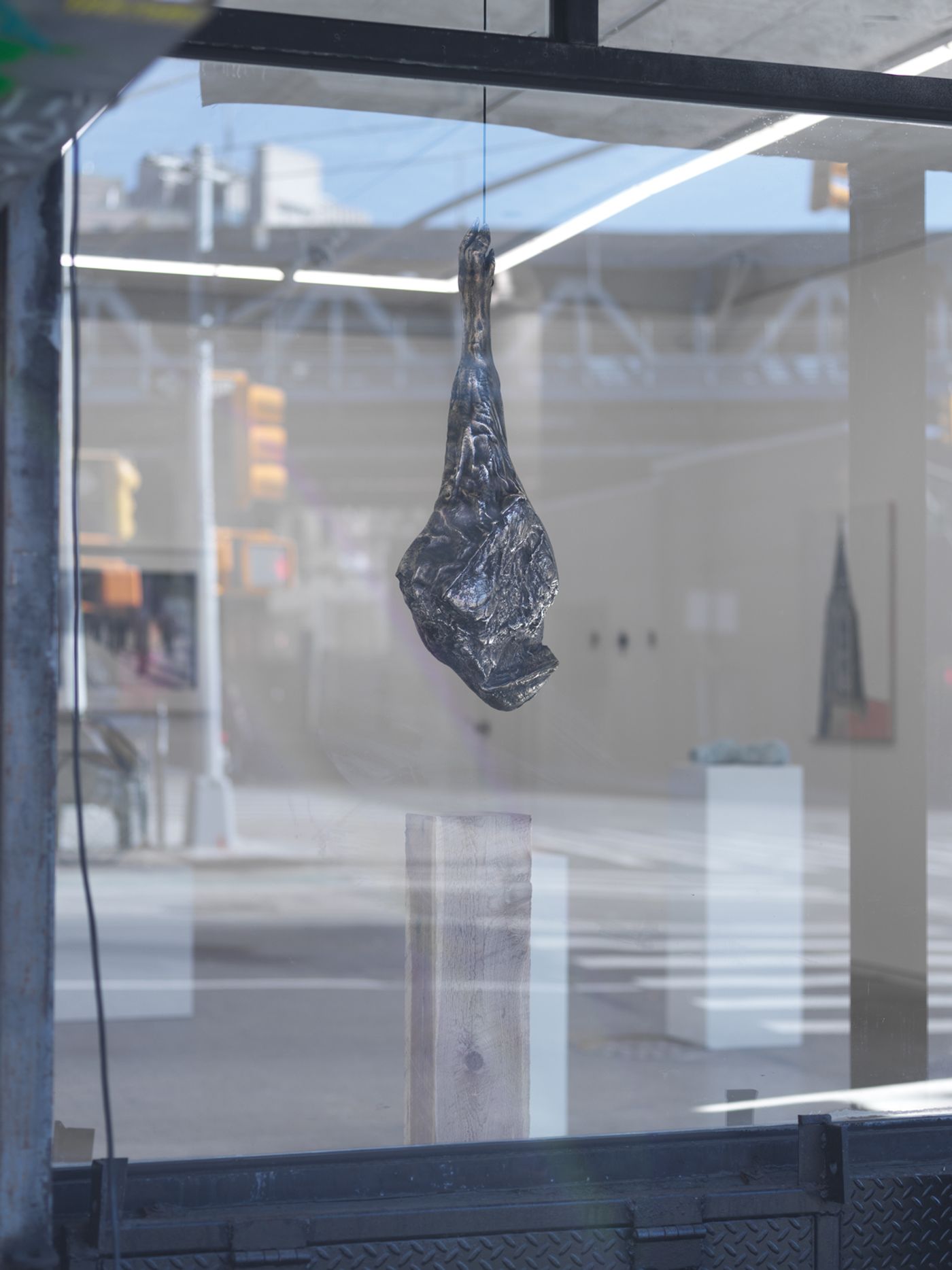
This exhibition is a curatorial portrait of an American icon, the car salesman. The Salesman depicts the world of Charles Brooks (b. 1950, Queens, New York), a lifelong purveyor of fine automobiles, new and previously owned. This exhibition creates a vibrant likeness of Brooks, an upwardly-mobile, upper-middle class man of German and Irish descent who came of age during the golden days of American automobiles. Approaching retirement and reflecting on his career, spending over 40 years working for BMW of Henry Street, he’s a baby-boomer, skeptical and resentful of the corporate transformation of the auto sales industry. The exhibition assembles a chorus of works of art that describe Brooks: each sculpture, painting, or photograph morphs into a personality trait or aspect of this man. Through this exhibition, we witness his love of preserved meats, mementos from celebrity clients; his vices; his formative years as both a hippie and a missionary; the shedding of a blue collar for one of white.
Who is Charles Brooks? Our salesman was not always a corporate warrior. He is a person of countercultural origins, as suggested by Scott Whipkey’s diptych drawing Key West, a swirling tie-dye tide of red, white, and blue, and a tribute to the salesman’s preferred vacation retreat. Before donning the suit and tie, Brooks embarked on a pilgrimage of his own, tracing the footsteps of the Grateful Dead and the Eagles on tour. The campus life he once embraced was exchanged for a more spiritual calling as he dropped out of college to become a Catholic missionary, spreading the “good word” through the gift of soccer, as captured by Christopher K. Ho’s stained glass sculptures. Now a devout Catholic, Brooks counts a visit to St. Lambert’s Church in Münster, faithfully rendered by Francesca Fuchs, as a life-affirming visit to his grandmother’s place of worship. Virginia Overton’s bronze sculpture Untitled (sister ham) adorns the window of 105 Henry Street, an effigy of Brooks’s favorite gastronomic indulgence: a country ham. An unapologetic "meat and potatoes" aficionado, Brooks wields a culinary palette that harbors deep mistrust for all foods green and leafy. John Waters, a celebrity client of Brooks, has contributed two photographs to the exhibition. One picture depicts the interior of an old Buick, carphone and all, which Brooks sold to Waters in the early days of the salesman’s career. Another image reveals a suit, splayed across a bed, a composition featured in a Christmas card personally sent to Brooks by Waters. To cope with the stress of meeting monthly sales quotas, Brooks nursed a habit of smoking Marlboro reds, becoming a suburban incarnation of the “Marlboro Man,” as suggested by Richard Prince’s snowy photograph. Chang Sujung’s sculptures—alabaster car keys, an old blue-collar shirt filled with business cards, a marble arm—become fragments of Brooks, and the vehicles he’s sold. The scent of fresh-cut grass wafts from an out-of-production Yankee candle. Selected for the exhibition by the unincorporated collective ECOLES, the candle’s eternal flame serves as a poignant tribute to the salesman's cherished pastime, the meticulous care of his well-tended lawn.
Altogether, this exhibition is a portrait, not just of a car salesman, but of the transformation from counterculture to corporate culture, of religion and retirement. What does it mean to be “sold?”